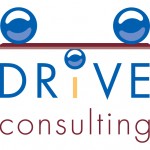 August 30, 2011 – Last newsletter we discussed the all important question of WIIFM (What’s in it for me?) and how answering that question allows people to develop the essential “buy-in” for the job at hand which then creates a fertile environment for full engagement.
August 30, 2011 – Last newsletter we discussed the all important question of WIIFM (What’s in it for me?) and how answering that question allows people to develop the essential “buy-in” for the job at hand which then creates a fertile environment for full engagement.
Since then we’ve all had a few months to ponder this issue, so now let’s delve into how this buy-in can best be achieved.
Recently, I was talking with another mediator about how to effectively assist our clients in shifting away from positional posturing to a mindset which allows for meaningful and successful mediation.
Often couples in the beginning stages of mediation adopt a stance of positional negotiation, advocating for the “rightness” of their positions. Such couples usually exhibit anger and resentment towards each other which feelings are intensified and justified in their minds when their positions are rejected. The outcome is predictable: the more they adopt this approach the more entrenched these couples become in their positions.
This approach repeats itself time and again, often because the mediated negotiations are viewed by many people as a zero sum game, i.e., one person will win and the other will lose. And there is a certain logic to this view. The pie is only so large. The more slices one gets the fewer slices left for the other person.
The standard response to this scenario, common to both mediation and coaching, is to try shifting the client’s mindset to a Win-Win perspective. A successfully mediated settlement is one where both parties win and no one loses.
But how can both people win when clearly the more one gets the less the other one gets? And that brings clients back to playing the zero sum game.
How can the zero sum game cycle be broken?
Perhaps not surprisingly the answer stems in part from more particularly defining the WIIFM element and clearly defining one’s goal at an even earlier stage. That is, visualizing exactly how the desired end game will look. Too often people begin negotiations without a clear idea of the conclusion they want; rather they merely try to get the best deal they think they can. The fallacy with this approach is that it creates a situation of shooting at a moving target – or more precisely shooting the arrow then drawing the target. Effective negotiation requires first setting the goal and then developing a strategy to achieve the desired result.
Sound familiar?
There is truly nothing new under the sun. As the only constant in life is change, there is but one simple rule for success – develop strategies to deal with the changes while steadfastly keeping your eyes on your goals. Set your goal, devise a strategy to achieve the goal and then develop tactics to realize the strategy.
So before beginning negotiations, whether with your spouse, partner, boss, employee, children or yourself (yes, we do negotiate with ourselves – more on that in a future newsletter), begin with a clear vision of what you want to achieve and how you want to achieve it. The clearer the vision the better the buy-in we discussed earlier. Broadly defining goals allows you to see more possibilities. And the more possibilities you see, the better able you’ll be to formulate and implement successful strategies to achieve those goals.
This then is the answer to our opening question. The essential buy-in is achieved when we have a clear vision of our desired goal (end result), a clear understanding of our adopted strategies and how they will guide us towards our goals, a flexible approach to our tactics which will allow for dealing with the inevitable changes resulting from encounters with the outside world. In other words, constantly reminding ourselves of the connection between our tactics (our actions) and our goals. This is the ultimate answer to WIIFM.
Adam J. Krim www.driveconsulting.net







